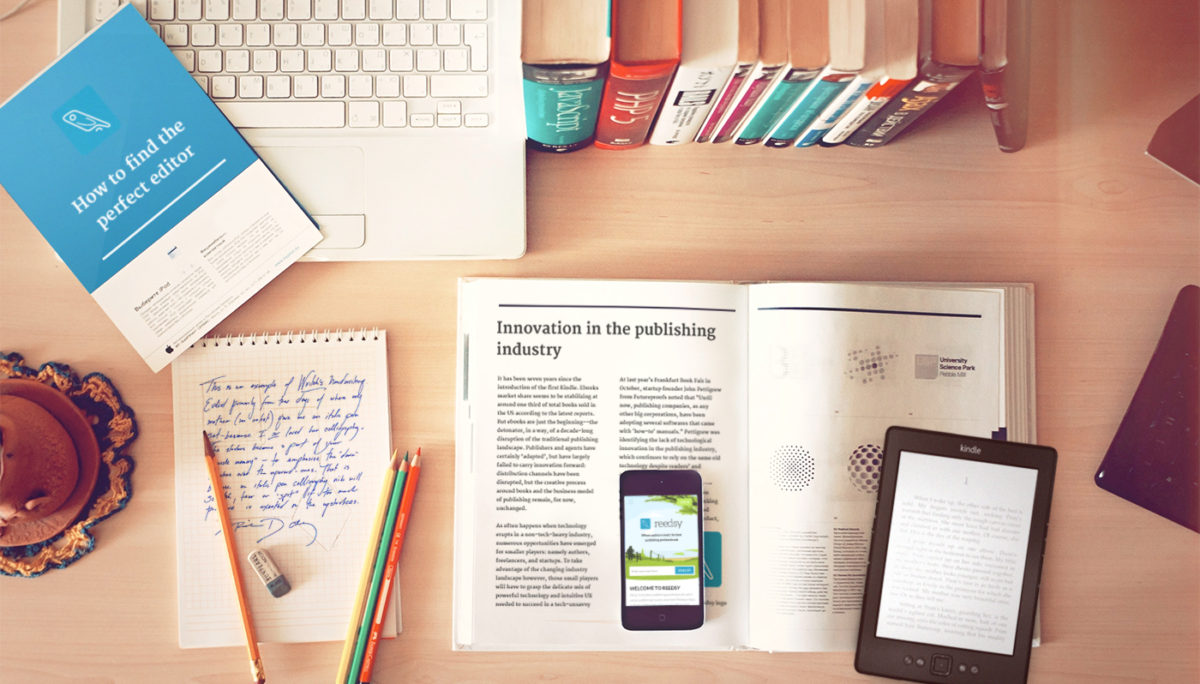Amazon, a well-known USA based e-commerce and cloud computing company, was founded by Jeff Bezos in 1994. Starting as an online bookstore, it later successfully transformed into a full-fledged retailer (Hartmans, 2017). Nevertheless the expansion, in 2014 books still accounted for 65% of Amazon’s total online sales in the US market, nearly half of which were e-books, generating $75 billion revenue (Bercovici, 2017). By 2016, the worldwide sales of e-books from Amazon further increased by 4% (Friedman, 2017).
Kindle, one of Amazon’s most innovative products enables users to browse, buy, download, and read e-books, newspapers, magazines and other digital media via wireless connection to the Kindle Store (launched in January 2017), was first introduced to the market in 2007. Nowadays, an increasing number of customers favors Kindle over physical books, not only because e-books are readily accessible and highly portable, but also because of the much cheaper subscription-based plans that provide access to thousands of books for a monthly fee.
Understandably, the introduction of ebooks and e-readers brought about significant changes in the book publishing industry:
- The emergence of self-publishing (the publication of any media without an established publisher) enables authors to oversee the entire publishing process;
- The shifting behavioral patterns of readers while e-reader devices become more affordable;
- The reduction of printing, inventory and distribution costs;
- The declining number of independent stores as a result of online bookselling.
Due to the digital nature of ebooks, distribution and reproduction costs are negligible. However, e-books have yielded the same profit percentage as print book does (Wilson, 2014). Considering readers’ perspectives, ebooks are superior to print books in terms of portability, price and availability (i.e. many titles are free). Ultimately, ebook lies at the intersection of appropriate technology, content, economic viability and user convenience, all which factors kicked off the industry disruption.
Furthermore, ebooks also prove to be a low-risk format for self-publishing since fixed costs are low, there is no need for an inventory, and responding to market demand is relatively easy. Although electronic publishers are unable to provide the promotion which is customary in traditional publishing, they can increase the share of revenues available for author royalties (Wilson, 2014) besides granting a chance for clear access to potential readers. After all, “e-books and e-readers are complementary products in a market that connects authors to readers.” (Gilbert, 2015)
Overall, digitalization does have a remarkable impact on the future of book publishing industry. The trend of self-publishing will continue to gain strength with small presses, independent authors and Amazon imprints accounting for over 50% of market share, further bolstered by shifting reader perceptions, the dismissal of traditional publishing products (Kizer, 2017). Additionally, behavioral changes like how and when people listen to content, will boost the popularity of audiobooks, the fastest growing format in the current market (Association of American Publishers, 2016). Moreover, established publishers must rise to the challenge raised by subscription-based models (e.g. Kindle Unlimited) and increased competition in ancillary services (i.e. marketing) particularly within the indie community.
Brought to you by Team 12 (G. Li, M.Q. Nguyen, T.T.A. Nguyen and Y. Wang)
Please visit our video: https://youtu.be/3PFyzx5OdVk
Sources:
- Bercovici, J. (2017). Amazon Vs. Book Publishers, By The Numbers. [online] Forbes.com. Available at: https://www.forbes.com/sites/jeffbercovici/2014/02/10/amazon-vs-book-publishers-by-the-numbers/#1cb6540c4ef9 [Accessed 15 Sep. 2017].
- Bluestone, M. (2016). Trade Publishing in 2016. [online] Association of American Publishers Newsroom. Available at: http://newsroom.publishers.org/trade-publishing-in-2016/ [Accessed 21 Sep. 2017].
- Friedman, J. (2017). 9 Statistics Writers Should Know About Amazon. [online] Jane Friedman. Available at: https://www.janefriedman.com/9-statistics-writers-know-amazon/ [Accessed 15 Sep. 2017].
- Gilbert, R. (2015). E-books: A Tale of Digital Disruption. Journal of Economic Perspectives, [online] 29(3), pp.165-184. Available at: http://escholarship.org/uc/item/0wg6v2r6#page-1 [Accessed 15 Sep. 2017].
- Hartmans, A. (2017). 15 fascinating facts you probably didn’t know about Amazon. [online] Business Insider. Available at: http://www.businessinsider.com/jeff-bezos-amazon-history-facts-2017-4?international=true&r=US&IR=T [Accessed 15 Sep. 2017].
- Kizer, C. (2017). Top Ten Trends in Publishing Every Author Needs to Know in 2017. [online] Written Word Media. Available at: https://www.writtenwordmedia.com/2017/01/04/top-ten-trends-in-publishing-every-author-needs-to-know-in-2017/ [Accessed 21 Sep. 2017].
- Lardinois, F. (2009). Report: EReader and EBook Market Ready for Growth. Available at: http://readwrite.com/2009/06/01/report_ereader_and_ebook_market_ready_for_growth/#feed=/search?keyword=ebook+market&awesm=~orChjXRwRSefdO. [Accessed 15 Sep. 2017].
- Rainie, L., Zickurh, K., Purcell, K., Madden, M., Brenner, J. (2012). The rise of e-reading. Available at: http://libraries.pewinternet.org/2012/04/04/the-rise-of-e-reading/ [Accessed 15 Sep. 2017].
- Wilson, T. (2014). The e-book phenomenon: a disruptive technology. Libellarium: journal for the research of writing, books, and cultural heritage institutions, [online] 6(1-2), p.3. Available at: http://hrcak.srce.hr/file/176647 [Accessed 15 Sep. 2017].

